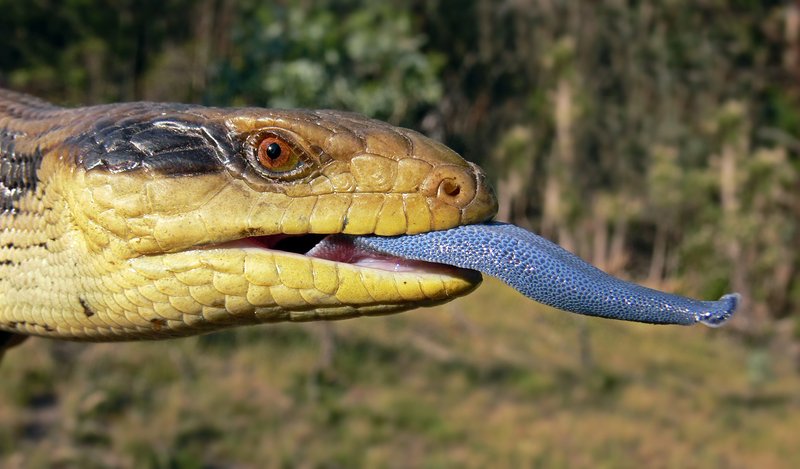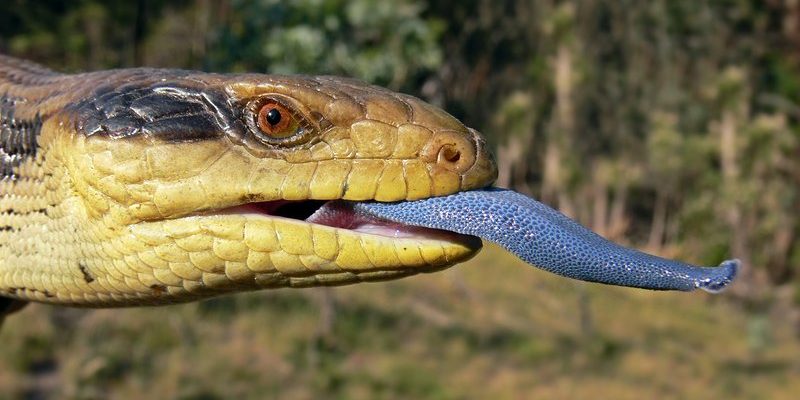
Blue-tongue skinks belong to a group of lizards known for their distinct blue tongues, which they flash as a warning to potential predators. It’s as if they’re saying, “Back off, I’m not as harmless as I look!” So, let’s explore the habitats of blue-tongue skinks around the world. These little creatures have found their niche in various environments, from the sun-soaked plains of Australia to the lush forests of New Guinea. Grab your coffee, and let’s dive into their world!
Australia: The Heart of Blue-Tongue Skinks
Australia is essentially the *home base* for blue-tongue skinks. This vibrant country is filled with diverse environments, and the skinks thrive in several regions. You’ll find them in the bushland, forests, and even suburban gardens! Honestly, it’s not unusual to spot one sunning itself on a rock or munching on insects.
There are several species of blue-tongue skinks in Australia, like the Eastern blue-tongue and the Western blue-tongue. Each of these species has adapted to its unique environment. For example, the Eastern blue-tongue prefers more humid areas, which provide plenty of shelter beneath leaf litter and logs.
These skinks are particularly fond of warmer temperatures. They’re ectothermic, meaning they rely on external heat sources to regulate their body temperature. So, you’ll often find them basking during sunny days or hiding under rocks and fallen branches during cool nights.
New Guinea: A Lesser-Known Habitat
When you think about blue-tongue skinks, New Guinea might not be the first place that comes to mind. However, this island nation is home to some species that are just as captivating. The environment here is lush and tropical, with rainforests that teem with life.
In New Guinea, you’ll find the New Guinea blue-tongue skink, which has a slightly different appearance compared to its Australian cousins. Their coloration can vary widely, blending seamlessly into the rich greenery of their habitat. You might be wondering why they’re so colorful—it’s all about camouflage! These skinks use their colors to hide from predators and to stalk their own prey.
The rainforest provides not only food but also plenty of shelter from the elements. The humidity keeps their skin hydrated, which is crucial for their survival. In the wild, blue-tongue skinks here might feast on insects, fruits, and even small animals, showcasing their adaptability.
Indonesia: A Diverse Range of Habitats
Indonesia is another surprising home for blue-tongue skinks. With thousands of islands, there’s a variety of habitats to explore. From tropical forests to drier regions, these skinks can adapt to many environments.
The Indonesian blue-tongue skink, for instance, can be found in places where the climate is tropical. These regions often have dense vegetation, which provides ample hiding spots from predators. You might even find them in lower-altitude areas where their food sources are plentiful.
One of the interesting aspects of these skinks is how they interact with their environment. They often dig burrows in the ground, allowing them to keep cool during the hotter parts of the day. This behavior is a clever way to avoid overheating, making them quite resourceful!
Other Regions: The Global Journey of Blue-Tongue Skinks
While Australia, New Guinea, and Indonesia are the primary homes for blue-tongue skinks, they’ve also made their way into other regions through the pet trade. This has led to them being found in places like the United States and Europe, bringing their unique charm to new audiences.
In these regions, blue-tongue skinks are often kept as pets. Owners typically try to replicate their natural habitat, creating terrariums that include hiding spots, warmth, and the right diet. It’s fascinating how these creatures can adapt to life in captivity, even though their roots lie in the wild.
If you ever come across a blue-tongue skink in a pet store, take a moment to appreciate the journey it has taken. From the sun-drenched Australian outback to a cozy vivarium in your home, these skinks have a story worth knowing.
Conservation and Habitat Preservation
As beautiful as blue-tongue skinks are, their habitats are facing threats from human activities. Deforestation, urbanization, and climate change have a significant impact on their populations. Protecting their natural environments is crucial for ensuring these fascinating lizards continue to thrive.
In Australia, various organizations work to conserve natural habitats and educate the public about the importance of biodiversity. By raising awareness, they hope to create a future where these skinks can continue to inhabit their native landscapes without fear of extinction.
The good news is that many pet owners also play a role in conservation. By supporting responsible breeding practices and avoiding illegal wildlife trade, they help ensure that wild populations remain healthy. It’s a team effort to protect these delightful creatures.
How to Care for Blue-Tongue Skinks as Pets
If you’re considering welcoming a blue-tongue skink into your life, it’s important to understand their needs. These lizards thrive in specific environments, so replicating their natural habitat is key.
Here are a few tips for caring for a blue-tongue skink in captivity:
- Temperature: Maintain a warm basking area with a temperature of about 90°F (32°C) and a cooler area around 75°F (24°C).
- Humidity: Ensure humidity levels are around 40-60%, using a water dish and misting when necessary.
- Diet: Feed them a balanced diet that includes insects, fruits, vegetables, and occasional protein sources like lean meats.
Taking these factors into account will go a long way in ensuring your blue-tongue skink lives a long and happy life. Remember, they’re not just pets; they’re unique creatures that deserve our respect and care!
Final Thoughts on Blue-Tongue Skinks
So, where are blue-tongue skinks found around the world? From the sun-kissed landscapes of Australia to the lush rainforests of New Guinea, these remarkable lizards have made their homes in a variety of environments. Their journey into global pet ownership has allowed many people to appreciate their unique charm and beauty.
If you ever have the chance to see one in the wild or as a pet, you’ll be witnessing a little bit of nature’s magic. And as you think about how to protect their habitats, remember that even small actions can lead to big changes for these enchanting reptiles. Whether in the wild or as a beloved pet, blue-tongue skinks have a special place in our world.

